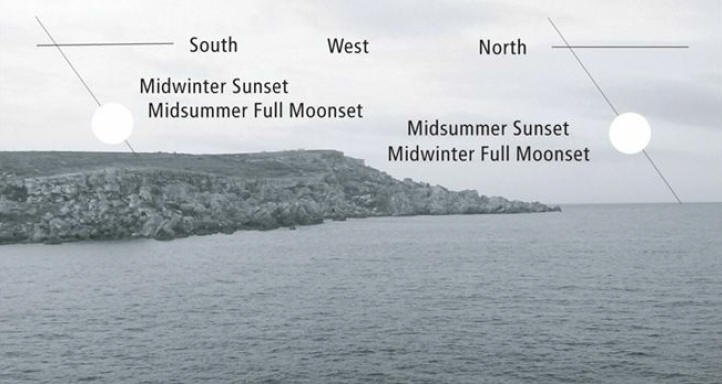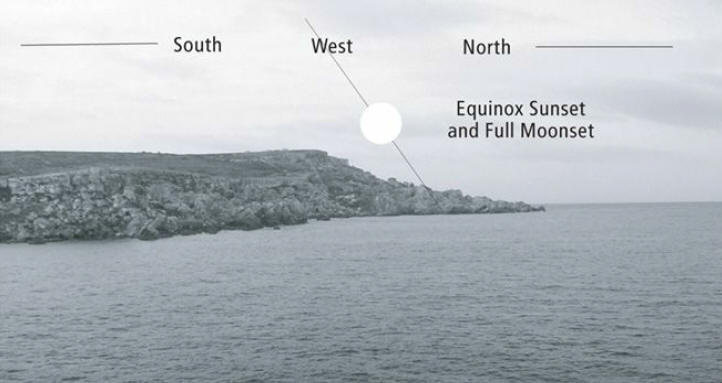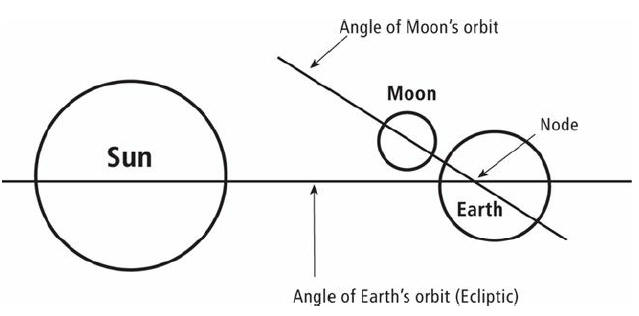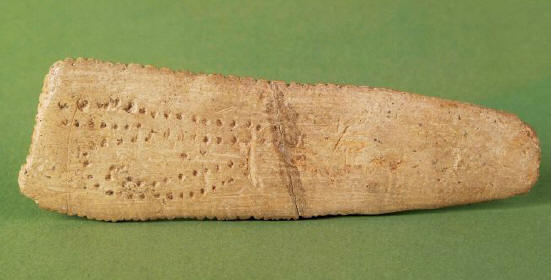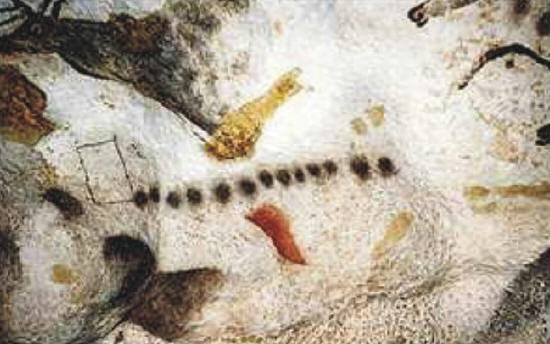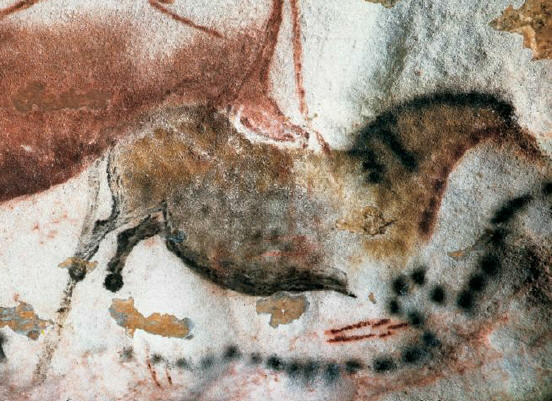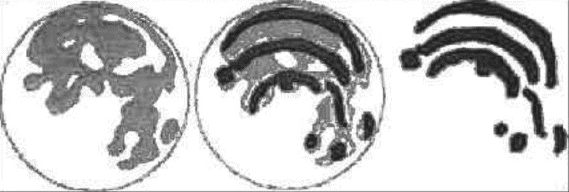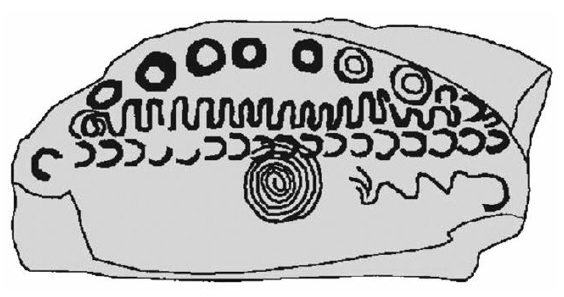|
CHAPTER ONE
THE DAWN OF AWARENESS
Traffic began to grind to a halt as
drivers leaned out of their windows, and even the birds abandoned
the sky to assemble in rows along guttering and telephone wires,
chattering like some misplaced dawn chorus.
The inky black circle then swept across
the ocean surface until it passed over the Isles of Scilly, off the
south-west coast of England, some forty minutes later. Here the path
width had expanded to 103 kilometers and was now covering the ground
at a speed approaching 1,000 meters per second. The circular shadow
then curved its way over Europe and on to the Middle East before
crossing India and finally disappearing over the Bay of Bengal.
To be precise, the Moon is 400 times
smaller than the star at the centre of our solar system, yet it is
also just 1/400th of the distance between the
Earth and the Sun.
Isaac Asimov, the respected
scientist and science-fiction guru, described this perfect visual
alignment as being 'the most unlikely coincidence imaginable'.
Then on those same dates film the Moon setting and you will see that they both go down at the same point on the horizon at the equinoxes (March 21st and September 21st) but the Moon will have the opposite setting point to the Sun at solstices in December and June. 2
At midwinter the situation is reversed,
with the Sun setting south of west and the Moon setting north of
west.
Of course, it could, and logically has to be, one big coincidence. What else could it be?
Even most of the ninety-two per cent of
the American population who state that they believe in God would
probably assume coincidence and only a minority might claim that it
is the grand plan of the Almighty.
The Earth is also tilted at an angle of
just over 23°27", although this is slowly decreasing so that in
several million years it will reach 22°54', after which it will
again increase.
It follows that solar eclipses can only occur when the Moon passes through the plane of the ecliptic and the Sun's light is blocked by the Moon.
These points of intersection happen
twice for each lunar orbit and are known as 'nodes'. These nodes
appear to move slowly around the background stars giving the
impression of moving backwards through the calendar occurring 19.618
days earlier per year. The cycle completes every 18.618 years, which
amounts to a surprisingly neat 6,800 days.
There are twelve different Grand Saros
eclipse series at the present time.
The bone he engraved was excavated nearly a hundred years ago at Abri Blanchard, not far from Lascaux in France.
The Abri Blanchard
bone. Experts agree that
Experts agree that the markings accurately correspond with a two-month lunar calendar. Around 250 generations later another astronomer also recorded this already ancient knowledge, using various natural minerals daubed onto a cave wall to leave the image of an empty rectangle followed by a series of fourteen sooty dots. It was realized that these marks might also be a lunar calendar.
The fourteen dots, it was argued,
represented the face of the Moon from full to new, after which the
empty rectangle would symbolize the disappearance of the Moon's face
on the fifteenth day.
The Lascaux caves.
Around 250
On this part of the cave wall there were twenty-nine dots, snaking around the bottom of a beautifully executed painting of a wild horse.
Twenty-nine days is the period from new
Moon through full Moon to new Moon again. And yet another artifact
known as the Isturitz Baton, displays an even more advanced four-
month and five- month lunar calendar.
They demonstrate a clear awareness of the passing of time and the cycles of the natural world. The discovery of an archaeological artifact is a matter of chance and is dependent on the number of objects of any particular sort that once existed.
The fact that so m any of these bones,
antlers and paintings have been discovered is a good indication that
they were not unique and that Moon knowledge was important to the
Paleolithic people of Europe and Africa, though this does give us
cause to wonder why such an early lunar fascination developed.
In July 2004, Rachel Caspari of
the University of Michigan and Sang-Hee Lee of the University
of California published a paper in the Proceedings of the National
Academy of Sciences, concerning comparisons of 768 different human
fossils from a huge span of human development. They then divided the
fossils into two groups adults of reproductive age, which they
settled on as fifteen years, and adults that lived to be twice as
old, based on tooth wear.
By calculating the ratio of old to young
individuals in the samples, the researchers found that their numbers
soared up to fivefold in the Upper Paleolithic group, a leap that
was so surprising that the team at first questioned its own results.
This would allow for the first
specialization in which talented men and women were fed and
protected by the group to allow them to add value to their early
society.
The period of history, known as the
Upper Paleolithic Period, marks a time when modern man was becoming
established in Europe and there was an expansion of population,
creating social pressures that led to the growth of trade networks,
increased mobility, and more complex systems of co-operation and
competition.
Why should high tide happen twice a day
and rise higher when the Moon was full or when there was no Moon at
all? Did the Moon have some kind of control over something as
massive as the oceans? Even stranger, why did women of childbearing
age lose blood once for every complete cycle of the Moon?
Carved into the wall of a limestone rock shelter, he found a 33cm female figure. The artistry involved from so early a period is quite remarkable, the more so given that it was executed with flint tools. The naked and full-bellied woman has her left hand on her abdomen and in her right hand is holding a bison horn, in the shape of a crescent moon. Upon the bison horn there are thirteen incised lines.
The
Venus of Laussel, as she is called,
is at least 20,000 years old.
If sexual intercourse does not take
place and the egg is not fertilized, it disintegrates after a couple
of days. At the end of the cycle, if no conception has taken place,
menstruation begins and the cycle commences once again.
Using photographic simulations of what a modern female sees of herself, McDermott demonstrates that the anatomical omissions and proportional distortions found in various Venus figurines occur naturally in autogenous, or self-generated, information.
The size, shape, and articulation of the objects appear to be determined by their relationship to the eyes and the relative effects of foreshortening, distance, and occlusion rather than by any symbolic distortion.
As self-portraits of women at different
stages of life, McDermott believes these earliest representations of
the human form embodied obstetric-al and gynecological information
and probably signified an advance in women's self-conscious control
over the material conditions of their reproductive lives.
At the same time, it is not at all
uncommon for a human female to menstruate on the same Moon phase
each month because twenty-eight days is merely an average, whilst
the period between one full Moon and the next is 29.53 days.
Statues of pregnant women with exaggerated genitals and breasts are common from the Palaeolithic to the Neolithic periods and there are strong indications of the existence of a fertility-based deity who has come down to us as 'The Great Goddess'.
The Venus of Laussel could quite easily
be a representation of this deity, complete with a representation of
the heavenly body with which she was equated - the Moon.
He decided to look at ancient manuscripts and the records of excavations of the Neolithic sites on the British Isles. Amongst other sites, he looked at the truly amazing prehistoric structures known as Newgrange and Knowth in County Meath, Ireland.
And it was at the recently excavated Knowth that he found a 5,200-year-old carving made up of a set of lines and dots.
A drawing of the Moon
surface map found at
Dr Stooke realized that this was not simply a Stone-Age doodle but a drawing of the face of the Moon.
He said:
Figure 4
Chris, along with Robert Lomas, had already published his analysis of the astronomical function of nearby Newgrange, which was carefully designed and engineered to allow the light of Venus to penetrate deep into the domed structure once every eighth winter solstice.3
This focused beam of light gave these
early scientists a very precise tracking of Venus, which allowed
them to maintain a calendar that would be accurate to a matter of
seconds over each eight-year cycle.
Here Shlain outlines his view that the evolution of writing specifically involved the use of the practical left hemisphere of the brain, as a direct contrast to the many thousands of years during which the more intuitive, inspirational right hemisphere had predominated.
He maintains that this explains the
virtual abandonment of a generally peaceful feminine-centered
society across much of Europe, the Middle East and Asia. This
transition was staggered but it began around 3,000 BC, when a more
aggressive, patriarchal social structure emerged with masculine
deities predominating.
In Sumer we find Nana, a very early Moon goddess, whilst in nearby Egypt, where writing came just a little later, there is an even better example in terms of Isis, who rose to become one of the most important and revered goddesses across the whole known world for several thousand years.
Isis originated as a Moon goddess, and the fact is borne out by one specific part of her story. Isis had to rebuild the body of her husband, Osiris, after he had been brutally murdered and his body chopped into pieces. She travelled all over the world to find the dismembered parts of her husband of which there were fourteen in total.
The story is analogous to the gradual
increase in size of the Moon across fourteen days from new to full.
Although to some early cultures the Moon was associated with a masculine deity, such as the Babylonian Sin for example, in by far the majority of cases the Moon was considered to be female and carried strong aspects of fertility.
This goddess had many names across the world. To the Greeks she was Artemis and the Romans called her Diana and Selene.
Her Finnish name was Kuu and to the Celts she was worshipped as Cerridwen. Nor was she ignored in the New World; in what is now Mexico the Moon goddess was called Tlazolteotli and to the Mayans she was Ixchup.
These names represent only a tiny
proportion of those that are still remembered and there can be no
doubt at all that Earth's Moon has been deeply important to humanity
across the whole world and for many thousands of years.
A truly ancient culture, such as that of
the Sumerians, never abandoned its lunar calendar, beginning each
month as the first crescent of the Moon showed itself in the dawn
sky. However, at the same time Sumerian Priests adopted a 'stylized'
month of thirty days in length, which fitted the solar year in a
more regular way. Lunar reckoning is still used in Islam, a legacy
of the religion's origins in the Arabian Peninsula.
We tend to forget in our modern world of electric lights that there was a time, not so long ago, when the Moon was a welcome sight on a dark night, but at the same time it was recognized to have awesome powers. It was believed by cultures from across the world that the Moon could have a bearing on people's mental states (see chapter five).
The English word 'lunatic' enshrines
this belief and, up to very recent times, it was considered that
those who were mentally unstable could be triggered into madness and
violence by the appearance of the full Moon. In addition, our
ancient ancestors were well aware that the Moon was responsible for
one of the most frightening and awe-inspiring happenings that
periodically 'stole' the Sun from the sky.
At such times the shadow of the Moon is cast upon the Earth. If the observer is in the right place on the Earth, it will appear that the light of the Sun has been blotted out and day can suddenly become night. A total eclipse is a truly remarkable event because in order for it to happen the size of the Moon and the Sun, as seen from the Earth, must be identical.
Nevertheless it does happen and it must
have struck absolute terror into the hearts of early humans. This
fear would have been slightly mitigated when it became possible to
predict eclipses, something that a number of early cultures sought
to do.
It is known that both the Assyrians and
the Babylonians could predict eclipses. In both cases many of the
astronomical skills were inherited from the earlier Sumerians and it
is highly likely that eclipse prediction already existed before 3,0
BC.
These astronomers were keen to be accurate as failure to get the prediction correct was likely to be lethal for them. In one documented case referring to the eclipse of 2136 BC the two astrologers who got it wrong were beheaded.
The following recorded their fate:
For thousands of years the Moon was a thing of awe and wonder to human beings across the entire planet and it remains so to millions of people today, despite technological advances and a good understanding of its physical characteristics.
For example, the Moon has always been equated with agriculture. Even in some parts of the fully developed world there are farmers and gardeners who would not dream of either planting or harvesting without direct reference to the phase of the Moon or even the part of the zodiac it occupies at any particular point in time.
The Moon is the fastest moving
astronomical body when viewed from the Earth and appears to pass
through all the zodiac signs in only 27.322 days.
For example, it is suggested that when
picking apples for immediate eating, it is best to harvest them at
the time of the full Moon, though if they are to be stored, the new
Moon is preferred, since the apples are believed to be less likely
to rot.
In consequence, the ancient Easter festival was reassigned to commemorate this miracle. There was, however, considerable debate over the date on which Easter should fall. The early Christians of Jewish origin celebrated the Resurrection immediately following their Passover festival, which, according to their lunar calendar, fell on the evening of the full Moon.
This was the fourteenth day in the month of Nisan (the first month of their year), thereby causing Easter to fall on different days of the week.
The new breed of non-Jewish Christians from around the Roman Empire wished to commemorate the Resurrection on a Sunday - their newly defined Sabbath. In 325 AD the Roman emperor Constantine I convened the Council of Nicaea to debate whether or not Jesus Christ was a man or a god.
Having officially designated Jesus
to be God, by a narrow margin, the council then ruled that
the Easter festival should be celebrated on the first Sunday after
the full Moon following the vernal equinox; and that if the full
Moon should occur on a Sunday and thereby coincide with the Passover
festival, Easter should be commemorated on the Sunday following.
Her festival was celebrated on the day of the vernal equinox which now falls around March 21st when the Sun rises in the east and sets in the west, and the day has twelve hours of daylight and twelve hours of darkness.
Traditions associated with this pagan festival survive in the idea of the Easter rabbit, a symbol of fertility, and in brightly decorated Easter eggs, which were a symbol of rebirth.
|
